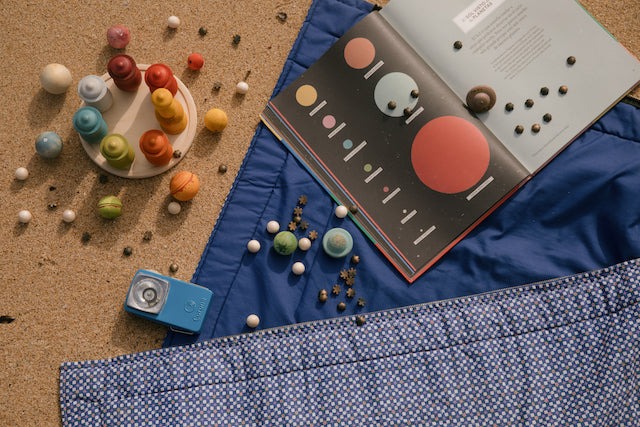Planetary Toys | Exploring the Universe Through Play and Imagination
Planetary toys” generally refer to toy products that depict planets, solar-systems, celestial bodies or space-related themes. These can range from model kits of the solar system (planets and their orbits), hanging planet mobiles, plush “planet buddies,” 3-D planet globes, educational science kits, and even planet-themed action figures. For example, there are space & astronomy toy categories specifically labelled planetary toys, Solar System Toys” and “Geography & the Solar System” at major retailers. Beyond simply being “toys,” many planetary toys bridge the domain between play and STEM (Science, Technology, Engineering, Mathematics) learning by enabling children (and adults) to explore concepts like orbits, planet sizes, spacing, rotation, and even physics of space. For example, one wooden solar system model board toy kit includes large planet “balls” plus astronaut figures and flash cards to boost understanding of each planet.
Why Planetary Toys Are Valuable
1. Hands-On Learning of Abstract Concepts
Space, the solar system and celestial mechanics are naturally abstract (vast distances, scale differences, invisible forces). Planetary toys concretize those abstractions. A child holding a model of Jupiter next to Earth can visually grasp the relative size difference. A rotating orrery (mechanical solar system) demonstrates orbital motion. This tangible interaction enhances comprehension and memory.
2. Cultivating Curiosity & Imagination
Planetary toys ignite wonder. They invite questions: What is that red planet? Why does Saturn have rings? What if I orbit this sun? Through play, children imagine space travel, alien worlds, future careers as astronomers or astronauts. Minor brands like “Celestial Buddies” turn planets into plush characters, making cosmic bodies relatable and fun.
3. Development of Spatial & Fine Motor Skills
Constructing a solar system kit (assembling planets, sticks, plastic or wood frames) promotes fine motor coordination. Navigating a planet mobile, or aligning pieces based on distance or size, engages spatial reasoning. This is beneficial especially in early childhood development.
4. Cross-disciplinary Learning (STEM + History + Art)
Planetary toys don’t just teach science—they also touch on history (space exploration, planetary discovery), culture (mythology behind planet names), art (design of models, colorful globes) and even geography (earth’s place among planets). They can be entry points into broader curriculum.
5. Long-Term Engagement
Unlike many trend-based toys, planetary toys can remain relevant as the child grows. A basic solar system model may be simple enough for preschoolers, but as the child grows, it can be used to explain more advanced topics (planetary motion, exoplanets, space missions). This makes them a good investment.
What to Look for When Buying Planetary Toys
When selecting montessori toys near me for children or gifts, here are key criteria to assess:
Age-Appropriate Complexity
- For younger children (ages 3-6): look for chunky planet balls, simple models, bright colors, durable materials.
- For older children (7-12+): kits with assembly, rotating parts, accurate planetary spacing, maybe even digital integration.
One product example: a “30 Pcs Wooden Solar System Model Board Toy Kit” with planet balls plus astronaut figures and flash cards.
Material & Safety
Check for non-toxic materials, sturdy construction, appropriate small-part warnings. Some models include small pieces or fragile rods, which may not be suitable for toddlers.
Accuracy vs Play Value
Decide whether you want a highly accurate scale model, or a more imaginative playful version. Some planetary toys emphasise fun characters (e.g., plush planet buddies) more than scientific accuracy.
Educational Content
Does the toy include learning elements (cards, booklets, experiment guides)? Is there potential to expand learning (e.g., GPS-based planetarium apps, rotating orbits, lighting features)? For instance, the category “Planet Toys, Solar System Toys, and Geography Toys” is explicitly linked to educational value.
Longevity & Flexibility
Will the toy remain engaging for years? A model that can be re-used, expanded (e.g., add exoplanets), or incorporated into school work is more valuable than a single-use gimmick.
Visual & Display Quality
Planetary toys often serve as décor in a room (space-themed bedroom). Choose something aesthetically pleasing — good color contrast, well-designed planets, perhaps illumination features.
Popular Types of Planetary Toys
Here are several common sub-types:
- Solar System Model Kits – multi-planet sets with stand/rods showing orbit around sun. Example: 3-D hanging solar system, “Steam Light Up Solar System”, etc.
- Planet Globes / Posters – Earth globes, or solar system posters showing planets and their relationships.
- Plush Planet Buddies / Characterised Sets – Soft planet-shaped toys with personality; example: Celestial Buddies.
- Space Science Kits – Combines planetary models with experiments (lighting, rotating orbits, magnetism, planet facts).
- Interactive Digital/AR Models – Some models may integrate with apps, allowing augmented-reality exploration of planets.
- Mechanical Orreries / Rotating Models – Adult-to-teen toys showing real or approximate motions and relationships of planets.
How to Make the Most of Planetary Toys
To extract full value (educational, engagement, durability) from planetary toys, consider these tips:
Integrate Into Play Routine
Set up a play session where the child “travels” from Mercury to Neptune, naming planets, learning one fact each. Use the toy as a story prompt (“What would happen if we landed on Mars?”).
Extend Learning
Use the toy as a springboard for library books, museum visits or videos about space missions, planet geology, exoplanets. Show how the toy model is just a starting point.
Display & Reinforce
Rather than hiding it after play, display the model or plush toys in the room. A visible model can spark constant questions and interest (“Why is that planet bigger?”).
Make It Member of Family
Give each planet a name, story or characteristic (especially effective with plush buddies). When children personalize their planets, they engage deeper.
Use as Teaching Aid
For parents or educators: Use the toy to explain earth’s tilt, seasons, moon phases, planet sizes, orbits. Even older kids can measure, compare and calculate based on the model.
Encourage Upgrading
Start simple with younger children, then upgrade to more complex models as interest grows. This progression maintains momentum rather than replacing the toy entirely.
The Broader Trend & Why It Matters
Toys near me are part of a broader movement: STEM-focused toys that blend play with learning. In an era where space exploration (private and public) is booming, children are fascinated by space, sensors, exoplanets, Mars missions. Toys that reflect this interest aren’t just fad—they encourage future generations of scientists, engineers and explorers.
Moreover, they help counterbalance the screen-time problem: rather than purely digital engagement, a well-designed planetary toy invites tactile, physical interaction, creative play, and deeper learning.
From a developmental psychology viewpoint, early hands-on encounters with spatial models, size differentials, and celestial narratives help build cognitive pathways in geometry, physics and abstract thinking. The memory of “I held Jupiter and Earth” is something that sticks.
Retail data also shows strong demand for “planet toys, solar system toys” categories. For instance, major retail sites categorize “Planet Toys” under science and geography toy categories to appeal to STEM-minded parents and schools.
Tips for Parents & Gift-Givers
- Determine the child’s interest level: if they only “like space a little,” pick simpler models; if they are totally into astronaut books and space documentaries, choose more advanced kits.
- Check age recommendations carefully – especially small parts and choking hazards.
- Set aside a dedicated space for the toy: a shelf, play-table, or room display helps keep it relevant.
- Encourage joint play: siblings, parent-child sessions enhance learning and bonding.
- Link the toy with content: plan an evening of stargazing, planetarium visit or documentary viewing to reinforce the toy’s themes.
- Consider budgets: While simpler planetary toys may cost under $25, larger or illuminated models, or plush premium sets (like Celestial Buddies) can cost significantly more.
- Maintain interest by rotating the toy’s role: sometimes play “planet discovery,” sometimes “space mission,” sometimes “alien visit” – the model can support multiple narratives.
Potential Pitfalls & How to Avoid Them
- Over-complexity for age: A kit with dozens of parts may frustrate a young child. Choose simpler builds or do the build together.
- Too decorative, not functional: If the toy looks nice but has minimal educational value, it may end up as décor rather than play. Balance aesthetic with functionality.
- Limited longevity: If the child “grows out” of it quick-ly, the toy may sit idle. Choose something that can scale with interest or age.
- Poor durability: Some models use very thin or fragile materials—look for strong rods, solid attachments, safe paint.
- Disconnected from broader learning: A planetary toy without context can be just a model. Link it to books, videos, discussions for maximum impact.
More information visit our website: https://montessorivision.com/
The Future of Planetary Toys
Looking ahead, we can expect planetary toys to continue evolving:
- Augmented Reality (AR) integration: Toys that connect to apps showing rotating planets, interactive missions, or space travel simulations.
- 3D printed custom planet models: Children could print their “own planet,” design unique orbiters or create imaginary planetary systems.
- Modular systems for older kids & teens: Expandable kits where you add exoplanets, moons, asteroid belts, even spacecraft modules.
- Eco-friendly materials: As with many toy categories, producers will focus on sustainable woods, recycled plastics, and non-toxic paints.
- Expanded narratives & storytelling: Plush planetary characters, planet-based board games, role-play sets where children become “space explorers” in orbit.
These advances mean planetary toys will stay relevant, entertaining and educational for a long time.
Conclusion
Planetary toys are much more than fun—they are gateways to wonder, exploration and learning. They bring the vastness of space into the grasp of children, helping them understand scale, motion, and the place of Earth in the cosmos. Whether it’s a simple hang-mobile of the planets or a complex rotating solar system kit with astronaut figures, these toys offer hands-on access to the universe.
For parents, educators and gift-givers, selecting the right planetary toy means balancing age-appropriateness, durability, educational content and long-term engagement. With those factors in place, a planetary toy becomes not just a hallmark plaything, but a legacy piece—a model that might spark a lifetime of curiosity and perhaps a future in space, science or discovery.


